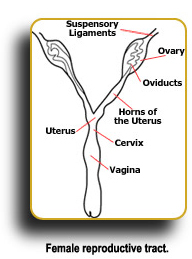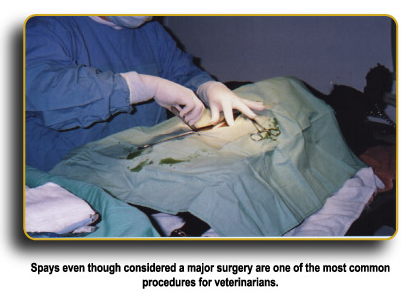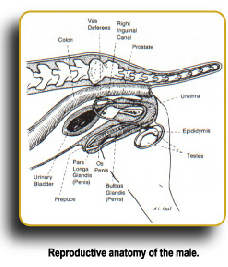


Christmas Store
The holidays are just around the corner so now is the time to fetch the finest gifts for the Labrador Lover on your Christmas list. We have over 100 gifts $50.00 and under. Visit our Christmas Store.
For the Lab
Bedding
Coats
Collars and Leads
Dog Bowls
Feeding Stations
Spa and Grooming
Toys and Treats
Travel and Accessories
For the Lab Lover
Apparel
Cards and Giftwrap
Fine Accessories
Gifts and All Occasions
Jewelry
Kids Only
For the Lab Home
Artwork
Books
Garden and Outdoor
Home Furnishings
Kitchen Accessories
Pillows, Throws, and Rugs
Gift ServicesGift Boxes
Gift Certificates
Spaying and Neutering-Why it is a Good Idea

Should You Spay or Neuter your Lab?
For the general pet population, spaying or neutering is highly recommended, unless your Lab is shown for conformation, then he/she can not be spayed or neutered. Spayed or neutered dogs are eligible however, for obedience trials, field trials, hunting trials, agility and Big Air trials (and the ever popular couch potato trials)! Not only is spaying or neutering highly recommended to reduce the numbers of pets that are being euthanized in over crowded shelters, but also for the health and well being of your Lab.
What does it mean to Spay my Lab?

Medically, spays are called ovariohysterectomies. An ovariohysterectomy (OHE) or spay is the complete removal of the female reproductive tract. The ovaries, oviducts, uterine horns, and the uterus are removed. Not only does this procedure prevent your Lab from getting pregnant, but it also eliminates the twice a year heat cycle, and the accompanying unwanted bleeding, nervousness, and the desire to mate. The surgery removes the source of production of such hormones as estrogen and progesterone, which are responsible for stimulating and controlling heat cycles.
Studies show that by spaying your female dog before her first heat cycle, you can greatly reduce her chances of developing mammary cancer. In fact, a female spayed before sexual maturity (6 to 9 months of age) has one-seventh the risk of an intact female of developing mammary cancer. Additionally, early spaying completely eliminates uterine infections and diseases, such as pyometra (a pus filled uterus), and also eliminates the threat of uterine and ovarian cancer which is very common in unaltered females.

An OHE or spay is considered by most veterinarians to be major surgery, primarily due to the fact that the abdomen has to be opened to perform the surgical procedure and that it must be done under sterile conditions to prevent infection. The procedure is generally quick and easy on young bitches but can be a little more difficult and time consuming on older bitches. According to Dr. Kathleen Conner, All Labs' consulting veterinarian, "the danger in spaying older females comes from the fully developed ovarian and uterine tissue, which have a larger blood supply. When some of the blood vessels from those tissues are hidden within fat, it is difficult for a vet to see them. Consequently, those blood vessels are not tied off so there is an increased chance of hemorrhage. In addition, the increased mammary development in an older female can hinder healing. The excess mammary tissue can pull on the incision and even trap infection." Even though an OHE or spay is considered major surgery, the fact that veterinarians perform this procedure so routinely reduces the occurrence of many major complications.
Your vet may want to keep your Lab under observation the day of surgery and perhaps overnight to ensure that she comes out of the anesthesia alright and is comfortable with the pain medication. Additionally, your bitch will need to refrain from strenuous activity for a period of ten days to two weeks until the abdominal incision heals. But in a matter of two weeks, she will be as good as new, actually better, as she no longer has the threat of developing canine breast cancer or other uterine infections.
What is involved in Neutering my Lab?

The surgical procedure to neuter an intact male is called an orchiectomy. An orchiectomy is performed using a small incision in the skin above the scrotum that does not even enter the abdomen. The procedure removes the testicles and ties off the cords that nourish the organs, suspends them in the scrotum, and carries sperm away into the urinary tract. Even though this is a very simple procedure for your veterinarian, it should be done under sterile conditions. Do not allow your dog to undergo any surgery in which instruments are shared among other patients. Dogs that have been neutered recover very quickly, generally within 24 hours or less. Also, post-operative pain medication is generally not prescribed.
As with spays, early neutering is recommended. Early neutering of a dog prevents the gradual enlargement of the prostrate which occurs naturally when it is exposed to testosterone. Prostate conditions such as benign enlargement, cysts, and infection are all related to the presence of testosterone. Over 80% of all unaltered male dogs develop prostate disease. Neutering also prevents certain types of hernias of both the testicles and anus along with perianal tumors from occurring.
While there are numerous medical advantages of neutering there are also behavioral advantages. Studies show that roughly 90 percent of male dog roaming behavior is eliminated. If dogs are neutered at an early age, they will not sense or respond to pheromones, and would certainly be less stressed and tend to stay home. Aggression toward other male dogs is reduced by approximately 60 percent. These dogs will tend to be less aggressive both toward other male dogs and also people. Territory marking drops by half and inappropriate mounting is reduced by about seventy percent. Another behavioral advantage occurs when you are training or working your dog. If neutered, your dog will focus his attention on his human families rather than being constantly distracted by pheromonal stimuli.
Uncovering Some Myths about Spaying and Neutering
Will spaying or neutering my Lab alter their personality?
No, any slight changes in their personality will be positive. There are many myths about canine reproductive needs. At the top of these myths is the suspicion that neutering turns a male into a sissy and spaying causes a female to lament her lost capacity.
The truth is that male dogs are usually better pets if they are neutered. They have less desire to roam, to mark their territory, or to exert dominance over family members. An intact male does not retrieve, hunt, or perform better in any way, except to reproduce. Neutering will reduce the desire to breed, and that has a calming effect. As far as we know, dogs do not lament their lost capability to reproduce. Regardless of the age when your Lab is spayed or neutered, they will remain a caring, loving, and equally protective companion.
I have heard that dogs become fat and lazy after they are spayed or neutered. Is this true?
Spaying and neutering does change the metabolism of your Lab, so in most cases, they will not need as much food to maintain their weight as unspayed or unneutered dogs. As owners, we tend to over-feed our dogs by not allowing for this change, and as a result our neutered and spayed dogs are more apt to put on a little unnecessary weight. The problem is not with our Lab but with us. Your Lab will not gain weight if you provide them with adequate exercise and watch their food intake. Neutering is good for your Lab, since sterilized pets tend to live an average of two to three years longer than unsterilized pets.
As for laziness, again the amount of activity and exercise that our Lab gets is often dependent upon us. There are plenty of spayed/neutered dogs that compete on a regular basis in agility or in the field or as service dogs or are trained in search and rescue. These dogs are a far cry from being lazy.
I might want to breed them some day. Dont you think that children should witness the miracle of birth?
Please dont let your Lab breed simply to teach your children the miracle of birth. There are countless books and videos available to teach your children about birth in a responsible way. Letting your Lab produce offspring you have no intention of keeping is teaching your children to be irresponsible. Making sure you have good homes for all the puppies (which could be a dozen) is only one step of the process. You also need to be sure the breeding will produce quality puppies. Have the male and female dogs had a medical exam to be sure they are healthy? Are they free of venereal diseases? Are they free from hereditary problems such as hip dysplasia, PRA or epilepsy? Are their vaccinations up to date, and have they been wormed? Are you prepared to pay the extra veterinary costs if there are problems with the pregnancy or delivery?
The fact of the matter is the vast majority of dogs regardless of use and perceived quality should not be bred. They are simply average dogs that you especially enjoy. Breeding quality dogs is not a one-time thing. Chances are that some percentage of any litter will experience either birth defects, whelping injuries, or death. Many dams experience complications in whelping, requiring a C-section, which can pose an additional threat to the unborn puppies and mother. Eclampsia (milk fever), acute septic mastitis (breast infection or abscess) and acute metritis (infected uterus) are additional complications the dam can incur and if not properly treated can be fatal to the mother. Is this what you had planned for your children to witness? As you see, a lot goes into responsible breeding. Anyone who has seen an animal euthanized in a shelter for lack of a home knows the truth behind the dangerous myth of sharing the miracle of birth.
Isnt it better for my female to have at least one litter before she is spayed?
Some people believe that it helps their female dog in some way to develop more completely or become a better pet. However, neither is true. Becoming pregnant and having a litter of puppies is very stressful on the female dog both physically and mentally. In addition, not all pregnancies go smoothly. Difficult labor, puppy mortality, and potential health problems in the mother such as uterine and mammary gland infections can take a toll on the mother and you. The sooner you spay your female, the better her health will be in the future.
At what age should I spay or neuter my Lab?
It is pretty much agreed upon by veterinarians that the best time to spay is before the first heat period. If spayed prior to the first heat, the odds of developing mammary cancer later in life are dramatically reduced. Because early spaying/neutering is optimal, dogs usually have the surgery between 5 and 8 months of age. A growing number of dogs are being spayed/neutered at 2 to 4 months. This early neutering does not affect the growth rate, and there are no appreciable differences in skeletal, physical, or behavioral development between those dogs neutered earlier than those neutered at a more traditional age.
It must be remembered that younger dogs may need different anesthetics and are more prone to hypothermia (lower than normal body temperature) during surgery. As long as procedures are modified to allow for these differences, early neutering is very safe.
Should I be concerned about my Lab undergoing anesthesia?
Placing a pet under anesthesia is a very common concern many Lab owners have. Although there is always a slight risk involved, the anesthetics used by veterinarians today are very safe. Many veterinarians also use equipment that monitors the heart and respiratory rates during surgery to ensure that their patients are doing well under anesthesia. The medical benefits today of having your Lab spayed or neutered far outweigh the slight risk involved with undergoing anesthesia. Consult with your veterinarian about blood testing your Lab before he/she is put under anesthesia.
Is there any correlation between incontinence and early spaying?
Spayed females occasionally develop urinary incontinence due to the lack of estrogen/progesterone, however when this occurs, it is usually when the female is older.
Can a pregnant dog be safely spayed?
Many dogs are spayed while pregnant to prevent the birth of unplanned puppies. A veterinarian, however, must consider the health of the pregnant dog, as well as the stage of her pregnancy, before deciding whether she can be safely spayed.
I heard the FDA just approved a chemical sterilization drug. Which is better for my male Lab?
There is a new non-surgical method of neutering male puppies. The chemical, Neutersol is approved by the FDA for puppies ages 3 to 10 months. The use of Neutersol when injected into the puppies testicles causes permanent sterilization. Although Neutersol eliminates successful breeding, it does not reduce any of the undesirable problems of the intact male since it does not completely halt testosterone production. The medical advantages to neutering are even more significant than this new non-surgical sterilization.
Spaying & Neutering-why the reluctance to do it?
By far the greatest hindrance in having ones pet spayed or neutered is not due to the cost or risk of surgery o n| even the recovery time. It is due to the owners reluctance and in many cases, ignorance in making the responsible decision for the health of their Lab. The idea of progeny would not be as attractive if that offspring ended up being abused or abandoned or put down at a local animal shelter. Hard to believe any Lab owner would allow such a thing, but it happens far too many times.
Brace yourself for the following recent true stories:
As I am writing this feature, I am horrified to read in my local newspaper how seven Labrador puppies, barely a week old, were shoved in a dog food bag and thrown into a county dumpster. Only two of the litter were found alive after a concerned citizen discovered the puppies and called animal control. The dogs were taken immediately to the SCPA where their health and age were evaluated and where they were reported to be only hours from death. The two surviving puppies, one black and one yellow, are slowly recovering, thanks to being fostered by the animal control officer and his wife.
This incident follows on the heels of another case of animal cruelty involving Labradors in an affluent, gated community in Pinehurst, N.C. On April, 19th, a contractor working on a construction site at The Country Club of North Carolina noticed movement coming from a garbage bag. After discovering nine puppies inside, he called the Pinehurst Police Department. Someone had disposed of nine Labrador Retriever puppies, only hours old, still with their umbilical cords.
Animal advocates immediately put out an alert to every single one of the members that live in CCNC and asked them to do some detective work. Pinehurst police were able to make an arrest of a man who lived within the gated community and have charged him with one count of felony animal cruelty and one of misdemeanor animal abandonment. DNA testing was done on samples of blood taken from his female dog and blood taken from one of the abandoned puppies. This DNA will be used as evidence in court, which is scheduled for November 5th. This was the first time Pinehurst Police had used DNA testing for an animal cruelty case.
Blood-type testing for dogs is much more common than DNA testing but not as accurate to be used as evidence in court. Blood tests can only rule out a possible parent. With DNA you can establish the parent rather than rule someone out.
All nine Labrador puppies have survived and have been individually adopted into new homes, thanks to the many peoples efforts involved in their recovery and fostering.
Both of these cases are heinous crimes that didnt need to happen. I know it is nearly impossible to imagine someone doing this, but you have to consider the fact that once your puppies leave your home, you have very little control over what happens to them or their potential offspring.
Consider the consequences.
I cannot stress enough the importance of early spaying or neutering of our beloved companions. The medical and behavioral benefits that actually increase your Labs chance of living a long healthy life are too significant to ignore and the more pets neutered or spayed, the less that will have to be destroyed unnecessarily.
What can you do?

Spay and neuter your dog(s).
Educate others as to the medical and behavior benefits in spaying and neutering.
Express your thanks to veterinarians who reduce their spay/neuter fees and work with their local shelters to assure only neutered or spayed animals are placed.
Sponsor a spay/neuter clinic or ad in your local newspaper.
For more information: www.spayusa.org - A nationwide network that provides affordable spay/neuter programs.

 Can You Spot The Holiday Hazards?
Can You Spot The Holiday Hazards?It’s easy for pets, especially Labradors, to get into trouble during the holidays. You may get so busy that you lose track of what is going on with your dog.
Click here to learn more about: "Can You Spot The Holiday Hazards?"

Would you like to see your Lab pictured here? Send us images of your Lab and we may include them on our Home Page!
Labrador Links
The Verstaile Lab
History of the Lab
Advice
Travel
Featured Labs
Featured Artists
.jpg)

